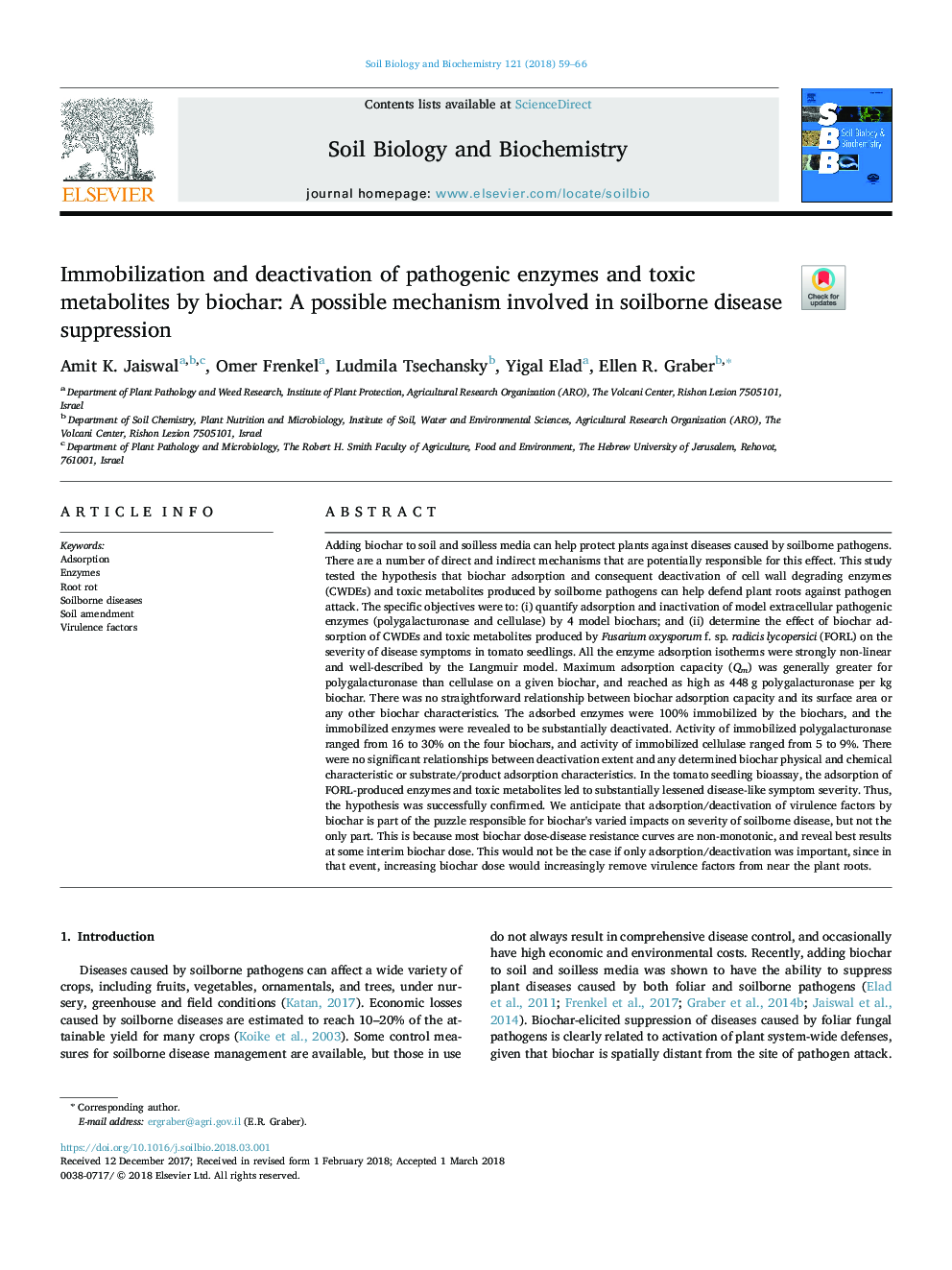| Article ID | Journal | Published Year | Pages | File Type |
|---|---|---|---|---|
| 8362756 | Soil Biology and Biochemistry | 2018 | 8 Pages |
Abstract
Adding biochar to soil and soilless media can help protect plants against diseases caused by soilborne pathogens. There are a number of direct and indirect mechanisms that are potentially responsible for this effect. This study tested the hypothesis that biochar adsorption and consequent deactivation of cell wall degrading enzymes (CWDEs) and toxic metabolites produced by soilborne pathogens can help defend plant roots against pathogen attack. The specific objectives were to: (i) quantify adsorption and inactivation of model extracellular pathogenic enzymes (polygalacturonase and cellulase) by 4 model biochars; and (ii) determine the effect of biochar adsorption of CWDEs and toxic metabolites produced by Fusarium oxysporum f. sp. radicis lycopersici (FORL) on the severity of disease symptoms in tomato seedlings. All the enzyme adsorption isotherms were strongly non-linear and well-described by the Langmuir model. Maximum adsorption capacity (Qm) was generally greater for polygalacturonase than cellulase on a given biochar, and reached as high as 448â¯g polygalacturonase per kg biochar. There was no straightforward relationship between biochar adsorption capacity and its surface area or any other biochar characteristics. The adsorbed enzymes were 100% immobilized by the biochars, and the immobilized enzymes were revealed to be substantially deactivated. Activity of immobilized polygalacturonase ranged from 16 to 30% on the four biochars, and activity of immobilized cellulase ranged from 5 to 9%. There were no significant relationships between deactivation extent and any determined biochar physical and chemical characteristic or substrate/product adsorption characteristics. In the tomato seedling bioassay, the adsorption of FORL-produced enzymes and toxic metabolites led to substantially lessened disease-like symptom severity. Thus, the hypothesis was successfully confirmed. We anticipate that adsorption/deactivation of virulence factors by biochar is part of the puzzle responsible for biochar's varied impacts on severity of soilborne disease, but not the only part. This is because most biochar dose-disease resistance curves are non-monotonic, and reveal best results at some interim biochar dose. This would not be the case if only adsorption/deactivation was important, since in that event, increasing biochar dose would increasingly remove virulence factors from near the plant roots.
Related Topics
Life Sciences
Agricultural and Biological Sciences
Soil Science
Authors
Amit K. Jaiswal, Omer Frenkel, Ludmila Tsechansky, Yigal Elad, Ellen R. Graber,
